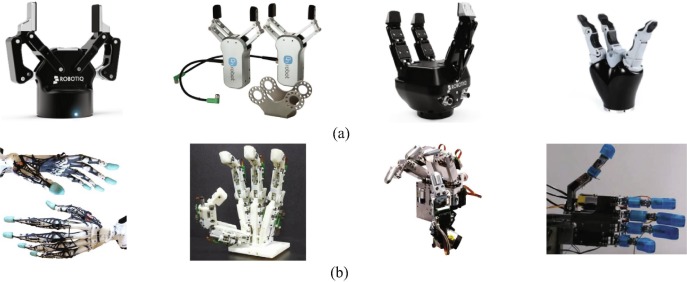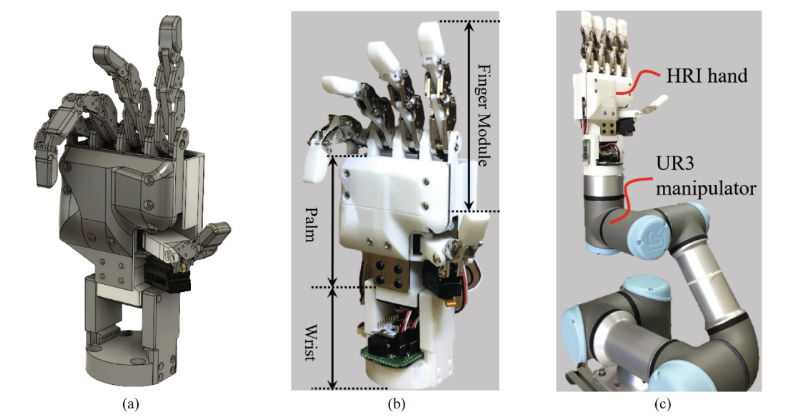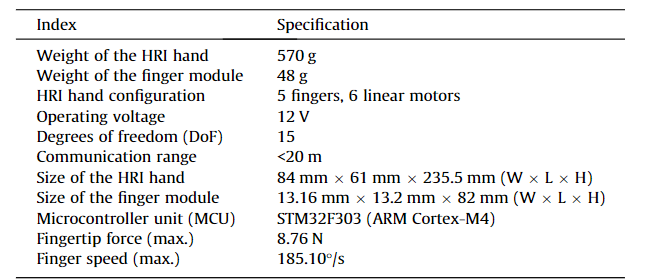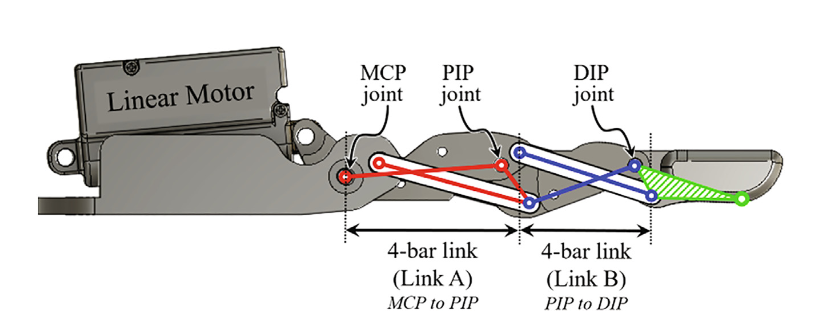Hyeonjun Park and Donghan Kim of Kyung Hee University in Korea are innovating within the robotics realm, detailing their efforts in the recently published ‘An open-source anthropomorphic robot hand system: HRI hand.’
The HRI hand system is open source and affordable, allowing users to 3D print the system for around $500. Developed with a five-finger structure, the authors created the hand with collaborative robotics in mind. This is an idea that continues to grow in manufacturing, allowing robots to partner in completing tasks with human industrial workers. End-effectors are becoming more widely used too, used for gripping and assembly ‘beyond the simple pick-and-place operation of parts.’
The typical robotic hand is available in both the gripper (the most common) type and the anthropomorphic, multi-finger type. While the gripper is most often employed by industrial users, it is only capable of the most basic tasks and incapable of providing support for operating machines or any jobs requiring precision. On the other ‘hand,’ the anthropomorphic type imitates the human hand in both form and function, featuring five fingers, and the ability to perform ‘broader applications than the simple gripper type.’With more complex functions, however, comes the necessity for more complex parts and software such as actuators, a variety of mechanisms, and control algorithms that must be written.
The anthropomorphic hand, designed after a typical male hand, has four fingers which include:
- Distal interphalangeal (DIP)
- Proximal interphalangeal (PIP)
- Metacarpophalangeal (MCP)joints
The thumb consists of:
- Interphalangeal (IP)
- Metacarpophalangeal (MCP)
- Carpometacarpal (CMC) joints
The thumb part “… operates MCP and CMC joints with two motors. The motor is controlled based on the control signal received by the micro-controller unit (MCU) via Bluetooth communication. A URDF, python node, and rviz package is also provided to support the Robot Operating System (ROS). All hardware CAD design files and software source codes have been released and can be easily assembled and modified,” explained the authors.
Finger modules include four links and three joints (MCP, PIP, and DIP joints).
The research paper also includes all the details for hardware files, software files, assembly, electronics configuration, operation procedures, robot operating system procedure, and more.

Assembly procedures for the HRI hand: (a) front of the finger, (b) back of the finger, (c) thumb part, (d) palm and palm cover, (e) wrist part, (f) back of the HRI hand cover and ISO 9409-1-50-4-M6 part
[Source / Images: ‘An open-source anthropomorphic robot hand system: HRI hand’]“The system proposed in this paper is developed with a five-finger structure, but each finger is modularized, so it can be developed with end-effectors of various shapes depending on the shape of the palm. For example, it is possible to construct various types of end-effectors depending on the researcher’s purpose, such as two-fingered grippers with two fingers or three-fingered grippers with three fingers,” concluded the authors.
“For those interested in implementing a variety of robot applications using the pro-posed system, we would strongly encourage contacting the corresponding author to discuss potential collaboration.”
Subscribe to Our Email Newsletter
Stay up-to-date on all the latest news from the 3D printing industry and receive information and offers from third party vendors.
Print Services
Upload your 3D Models and get them printed quickly and efficiently.
You May Also Like
Seakeeper Ride Releases Pocket Fit Kits
Seakeeper Ride makes a Vessel Attitude Control System (VACS), which greatly reduces the pitch and roll of pleasure craft. The Fort Myers-based company hopes to make boating more comfortable by...
Creality Raptor Pro: Software Limited?
Disclosure: The Raptor Pro was provided to me by Creality free of charge for the purpose of this review. I have not received any other compensation. All opinions expressed are...
3D Printed Ceramic Structure Supports New Gallery at London Museum
At one of the world’s most renowned museums, history and innovation are now side by side. London’s Natural History Museum (NHM) has unveiled a 3D printed ceramic structure that supports...
Billion Dollar Bambu and a New Worldview?
Imagine for a moment that Bambu Lab sells 2.7 million 3D printers this year. If their average ticket price is $350 and they generate $75 million in filament sales, their...













































